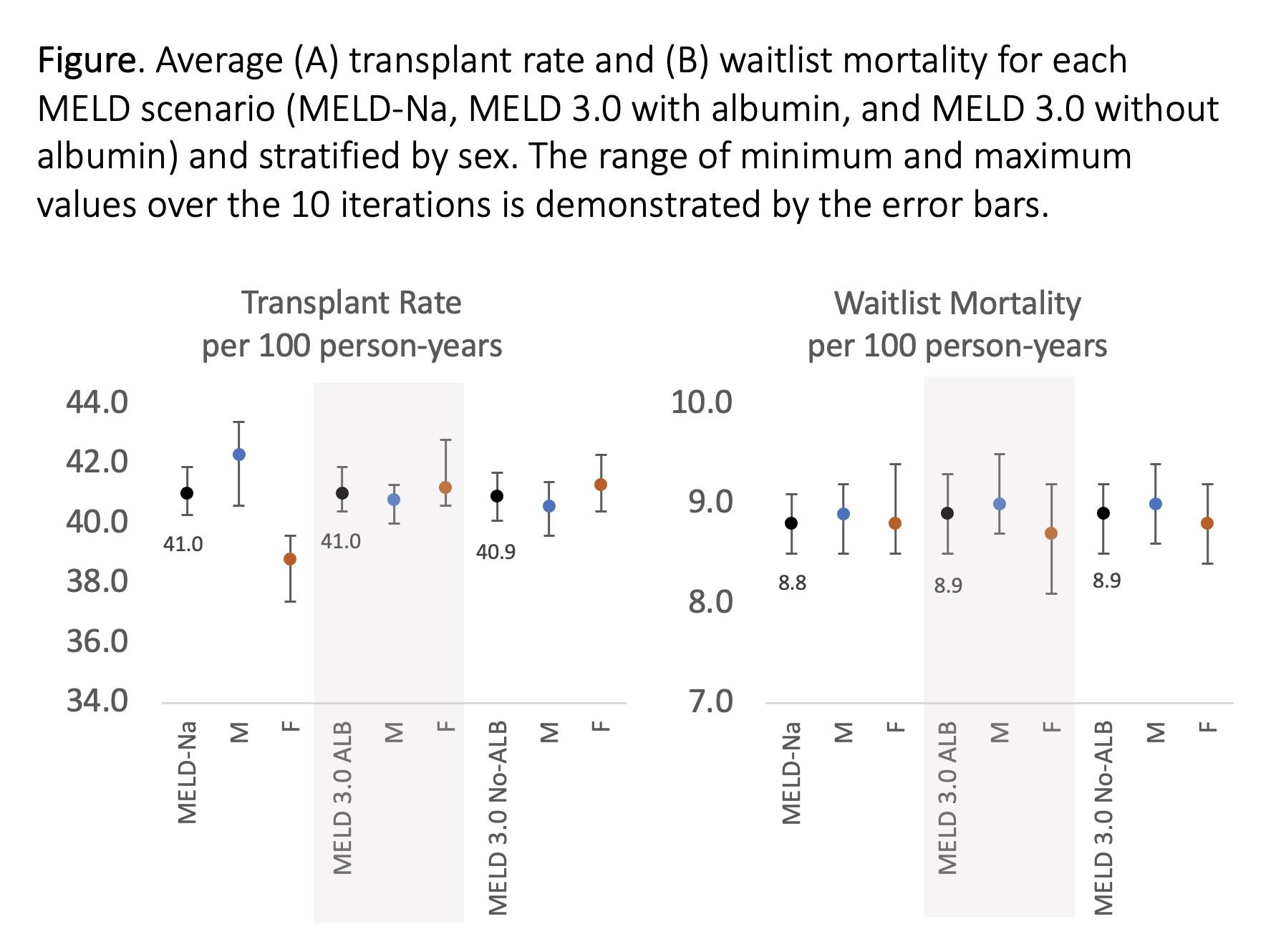Meld 3.0 for Liver Allocation: Results From the Liver Simulated Allocation Model
1Stanford University, Stanford, CA, 2Hennepin Healthcare Research Institute, Minneapolis, MN, 3University of Washington, Seattle, WA, 4University of Minnesota, Minneapolis, MN
Meeting: 2022 American Transplant Congress
Abstract number: 194
Keywords: Allocation, Liver transplantation, Prediction models, Waiting lists
Topic: Clinical Science » Liver » 60 - Liver: MELD Allocation*
Session Information
Session Time: 8:10am-9:15am
 Presentation Time: 8:15am-8:30am
Presentation Time: 8:15am-8:30am
Location: Hynes Veterans Auditorium
*Purpose: Priority on the US liver transplant waitlist is determined by the model for end-stage liver disease (MELD), a score composed of serum bilirubin, creatinine, and prothrombin time. In 2016, a modification to include sodium (MELD-Na) was implemented.Recent studies have suggested that MELD-based allocation leads to sex-based disparity, wherein women have reduced access to liver transplant and increased risk of waitlist mortality compared with men. MELD 3.0 is a recently proposed model that improves on MELD-Na, incorporating sex and albumin as additional variables and updating existing coefficients. This simulation analysis evaluated the impact of replacing MELD-Na with MELD 3.0 on waitlist and transplant outcomes in the United States.
*Methods: Using data from the Scientific Registry of Transplant Recipients, the liver simulation allocation model (LSAM) was used to estimate waitlist and transplant outcomes for adult liver transplant candidates when waitlist priority was determined by MELD 3.0, with or without albumin, instead of MELD-Na. The analysis considered the most recent available LSAM cohort of actual donors and recipients from 2015-2016 and the “acuity circle” framework implemented in 2020. For each of the three MELD scenarios, 10 LSAM simulations were run; each of these iterations created novel match runs based on randomized candidate listings and organ donation times, and for each outcome, the average value and range across the 10 iterations were reported. To examine sex-based differences, results were analyzed by sex.
*Results: In simulation, there was no substantial change in the overall number of waitlist deaths or transplants across the 3 MELD scenarios (MELD-Na, MELD 3.0 ALB, and MELD 3.0 No-ALB). When stratified by sex, there was an increase in the transplant rate for women in both MELD 3.0 scenarios, such that the average transplant rate was then comparable to that of men (Figure) (MELD-Na: 38.8 transplants per 100 person-years [F] versus 42.3 [M]; MELD 3.0 ALB 41.2 [F] versus 40.8 [M]; MELD 3.0 No-ALB 41.3 [F] versus 40.6 [M]). No difference in waitlist or posttransplant survival was observed under MELD-Na or MELD 3.0 scenarios.
*Conclusions: MELD 3.0 is predicted to equalize the difference in transplant rates between sexes, improving access to transplant for women, who are disadvantaged in the current liver allocation system.
To cite this abstract in AMA style:
Kwong A, Weaver T, Schladt D, Wey A, Audette K, Biggins S, Snyder J, Israni A, Lake J, Kim W. Meld 3.0 for Liver Allocation: Results From the Liver Simulated Allocation Model [abstract]. Am J Transplant. 2022; 22 (suppl 3). https://atcmeetingabstracts.com/abstract/meld-3-0-for-liver-allocation-results-from-the-liver-simulated-allocation-model/. Accessed January 8, 2026.« Back to 2022 American Transplant Congress

